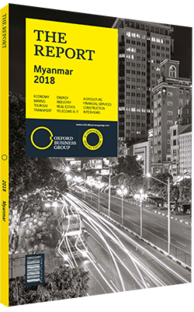Jean Michel Romon, Managing Director, Balloons over Bagan : Interview

Interview: Jean Michel Romon
With an increase in national income and higher living standards, in what ways do you see domestic tourism shaping the future of the sector as a whole?
JEAN MICHEL ROMON: When you break down tourist arrivals in Myanmar, you will notice that there have not been significant variations in the number of foreign arrivals since the country opened up in 2011 and 2012. Since then, Myanmar has registered an average of 1m annual international tourist arrivals. The sector expects this number to climb because of the country’s tremendous potential and variety of landscapes, which leave room for the development of different tourism niches. If Thailand is currently receiving around 35m visitors per year, we can comfortably say that in the next decade we can expect Myanmar to triple or even quadruple its number of annual foreign visitors. However, when analysts talk about tourism in the country, they tend to focus on foreign travellers and forget to draw their attention to what has been an essential growth driver of the industry: domestic travellers.
Domestic tourism is a relatively new phenomenon made possible by opening up the economy. From 2011 the average family in Myanmar started to gradually have access to products and services they did not have during the military regime. Among them, the democratisation of the car as a means of transport was one of the main growth catalysts of domestic tourism. At the same time, general improvements to the national road infrastructure also significantly reduced travel time.
Another important factor that transformed the domestic tourism market was the telecommunications revolution the country experienced in 2013. The people of Myanmar are heavy data consumers, and the spread of social media has generated new opportunities for tourist operators and hotels to promote themselves without having to spend much money on advertising campaigns. For example, Facebook opened up a new market that we weren’t able to reach four or five years ago. To sum up, domestic tourism started growing on the back of three factors: access to car transportation, telecoms market reform and the expansion of social media access. In general terms, domestic tourism is critical for the sustainability of the industry, particularly during the low season of March to October, when international arrival numbers tend to fall.
How could ties be strengthened between the government and the relevant tourism agencies in order to enhance policymaking and sector governance?
ROMON: As the industry is still taking its first steps, Myanmar has the chance to choose which type of tourism it wants to develop. It also has the unique opportunity to look across the region and learn from the successes and mistakes of countries such as Thailand and Vietnam. In this context, the Ministry of Hotels and Tourism has to set the guidelines and decide, on behalf of and according to the aspirations of the Myanmar people, the direction the sector should go.
Tourism has many positive sides. It creates jobs and works as an important channel to bring in money from overseas. However, it can also create problems, including damage to cultural and historical heritage. In the face of these challenges, there are important decisions to be made: does Myanmar want a mass market? Or does it prefer a smaller market targeting high-end travellers? The sustainable development of the sector will require industry players to come together, from the government and regulators, to the regional and local governments and private tourism investors.
At the same time, the development of the sector is also highly dependent on education. By employing people and providing them with on-the-job training, the industry does its share by giving its employees a set of transferable skills that can be used elsewhere. For example, we can train waiters while also developing skills in electricity and plumbing. Furthermore, the state should gradually raise awareness on the importance of taking care of the local heritage and environment.
You have reached the limit of premium articles you can view for free.
Choose from the options below to purchase print or digital editions of our Reports. You can also purchase a website subscription giving you unlimited access to all of our Reports online for 12 months.
If you have already purchased this Report or have a website subscription, please login to continue.

